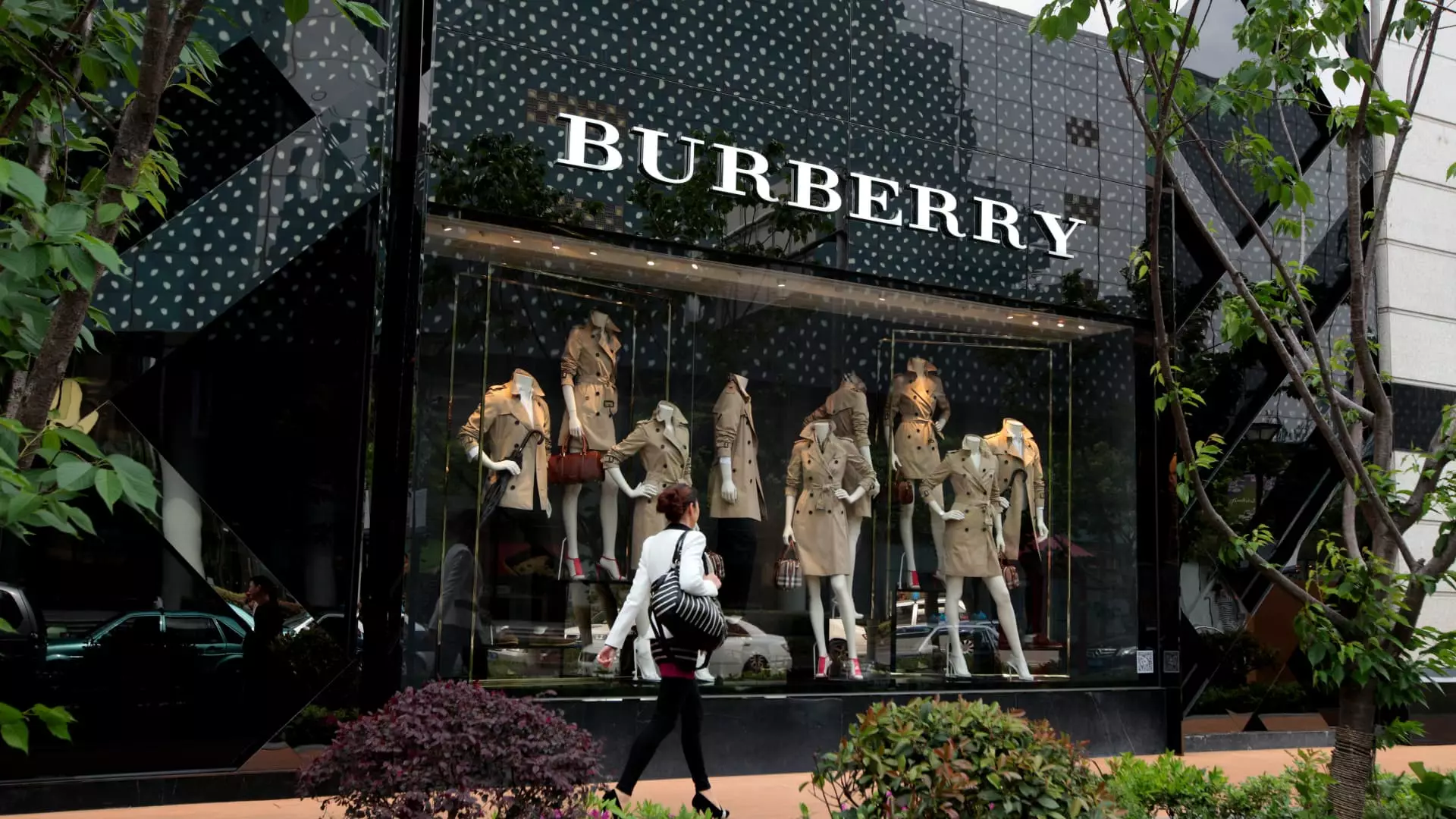In a bold move to reclaim its position in the luxury market, Burberry is embarking on a comprehensive overhaul, aptly named “Burberry Forward.” Announced recently, this strategic plan seeks to reconnect the iconic British fashion house with its roots while simultaneously addressing the pressing issues of waning sales and brand relevance. The new direction is not just an aesthetic or promotional shift but a thorough revitalization targeting core product offerings like its signature trench coats and scarves. This tactical pivot comes at a crucial time, with the brand having suffered a staggering 39% decline in stock value this year, making the stakes even higher for new CEO Joshua Schulman.
Burberry’s revitalization plan comes in response to growing concerns that the brand has become estranged from its heritage, focusing too heavily on niche products that do not resonate with the broader consumer base. Schulman emphasizes the urgency of this shift, asserting that the brand must stabilize its business model and enhance its reputation for durable, timeless luxury. His commitment is clear: “Today, we are acting with urgency to course correct,” he stated, signifying that there’s no time to waste in restoring what makes Burberry a beloved brand.
Schulman’s appointment as CEO marks a pivotal moment in Burberry’s recent history, as he is the fourth individual to lead the company in just a decade. With a background at Michael Kors, Schulman brings a wealth of experience and a nuanced understanding of the luxury market, which many analysts view as crucial for Burberry’s comeback. In a landscape rife with challenges, the expectation is that Schulman will leverage his insights to sculpt a vision that aligns both business and creative ambitions.
Under his leadership, analysts have noted that Burberry’s pricing strategies, particularly in leather goods, were becoming disconnected from market realities. This was largely causing alienation among discerning customers who expect a consistent quality-to-cost ratio in luxury purchases. By refocusing on heritage, Schulman aims to set a more coherent pricing architecture that not only appeals to high-end consumers but also strengthens the brand’s standing against competitors.
The announcement of the new strategy has elicited positive responses from market analysts, with many suggesting that the initiative could be a “turning point” for Burberry. Notably, RBC Capital Markets analyst Piral Dadhania remarked that a focus on heritage products and outerwear represents a “more authentic” strategy that offers substantial competitive advantages in a saturated luxury market. This sentiment was echoed by Mamta Valechha of Quilter Cheviot, who hailed the move as pivotal amid a challenging period for the brand.
While the skepticism surrounding Burberry has been palpable, this strategic overhaul has reinvigorated hopes among investors and analysts alike. Citi’s Thomas Chauvet anticipates significant transformations in product design and communication, with a keen eye on not sacrificing the brand’s high-end positioning. Analysts are particularly optimistic about potential changes that Schulman could implement using lessons learned from his previous tenure.
Despite the optimism, challenges abound. Yanmei Tang of Third Bridge cautions that the ultimate success of Burberry’s revitalization will hinge on Schulman’s ability to synchronize his strategic vision with the creative direction spearheaded by the company’s designers. The intersection of business strategy and creative authenticity is delicate; a misalignment could exacerbate existing problems rather than yield the desired turnaround.
As Burberry seeks to recalibrate its identity, the need for innovative yet accessible collections that pay homage to the brand’s rich British heritage becomes paramount. This dual focus could pave the way for a diverse product line that appeals to both high-end and aspirational consumers. Looking ahead, finding that balance will be critical for reclaiming market share and ensuring sustained relevance.
Burberry’s recent strategic shift represents a calculated effort to redefine its brand narrative and restore consumer confidence. With a renewed focus on heritage items, the luxury house aims to revitalize its image and, potentially, its financial performance. While analysts express guarded optimism about the revival efforts, the real test will come in how effectively the leadership translates their ambitious plans into tangible results that resonate with discerning consumers looking for both luxury and authenticity. As the brand pivots towards a heritage-centric model, the next few quarters will be crucial in determining whether Burberry can indeed find its footing in an evolving market landscape.

